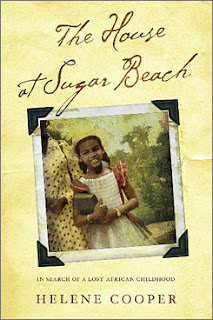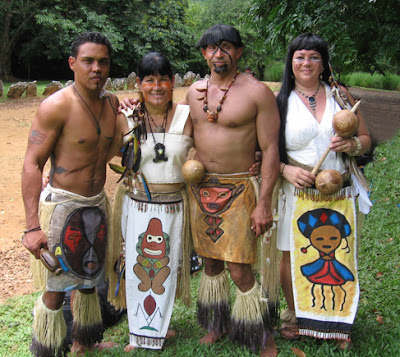Understanding Samba


If you've heard of Brazil, you've heard of samba. Most people have glimpsed photos or scenes from Brazilian Carnaval, with sexy revelers festooned with a feather or two, writhing to samba rhythms. But what exactly, is samba? I always thought it was a music genre but I discovered that it's music, dance, and so much more, at Santo Amaro's House of Samba.
Stepping into the terraced building that also holds a studio and performance space, before you can even get to the samba exhibits, the altars of seven saints loom. Like all African art forms, samba does not separate the spiritual from the mundane. The heavy percussion of samba beats derive from candomble music used for sacred ceremonies. Statues of Saints Lazarus, Joan, Barbara, Bonfim, Anthony, Roue, and the Portuguese twin Saints(! ) Cosme and Daniel, line the first wall of the Samba House. The corresponding colors for the candomble orishas or deities, adorn the background of each altar. The beads representing the orisha connected with the saint hang dramatically over each statue. I stood in front of the altars, a little overwhelmed. I was raised Catholic so most of the figures were familiar but I couldn't figure out all the symbolism and how the orishas connected specifically. The candomble religion is embedded in Brazilian culture but it's a very complex system. I'll be discussing it in detail in a later post.
An exhibit highlighting samba instruments was next. Besides the all important drum, (pandeiro)there were tambourines and guitars (cavaco) and plates and knives, over a floor filled with sand. The floors of poor houses were typically made of sand and samba music and dance is traditionally performed in the sand. Bahia is known for its rural, folk versions of samba, which is very different from the contemporary samba you see in Rio. Samba De Roda, or circle dance, is the most famous. It features women dancing in and out of a circle and men playing guitar, tambourine and plate and knife. a defining move of the samba de roda is the umbigada, where the women bounce gently off of each others bellies. The music and dance can be traced to African Bantu culture and the exhibits spotlight this point, displaying all the clearly African characteristics of samba.
Samba rhythms and dances include hundreds of different varieties, not just what you see at carnaval. That thundering, call-and-response, samba heard during Carnaval is called samba de enredo. The slowed down, melodic samba that focuses on a lead singer is samba-cancao or song samba, which is what you hear in Rio clubs and what the House of Samba explores.
Of course, there are boatloads of samba hybrids in contemporary Brazilian music. Bossa Nova, Samba Reggae, Samba Rap and Musica Popular Brasilera (Brazilian pop) all get their flavor from samba. Personally, I love it all-- the booty-shaking, straight samba, the chilled out bossa nova, the soulful samba reggae, I listen to all of these. My favorites include Gilberto Gil (now Brazil's minister of culture) Daniela Mercury, Seu Jorge, Virginia Rodrigues, Ana Carolina and the angelic voice that has been constantly drifting through my house for a solid year, CeU. It's no coincidence that her name translates to sky or heaven. This girl has the range and nuance of all the great goddesses of song-Billie, Ella and Nina with a little early Marcia Griffiths for good measure. If you don't know any of these names, you're missing the important links between popular musical history and world music influences. Although CeU is young and still developing, her self-titled debut CD earns serious props, it was nominated for a Latin Grammy and captured fans globally. She expertly blends samba and bossa nova with reggae, jazz and soul. All the tunes are in Portuguese except a sublime cover of Bob Marley "Concrete Jungle" but it doesn't matter. Her voice translates every songs emotion. I believe that's the mark of every great samba singer.






Comments